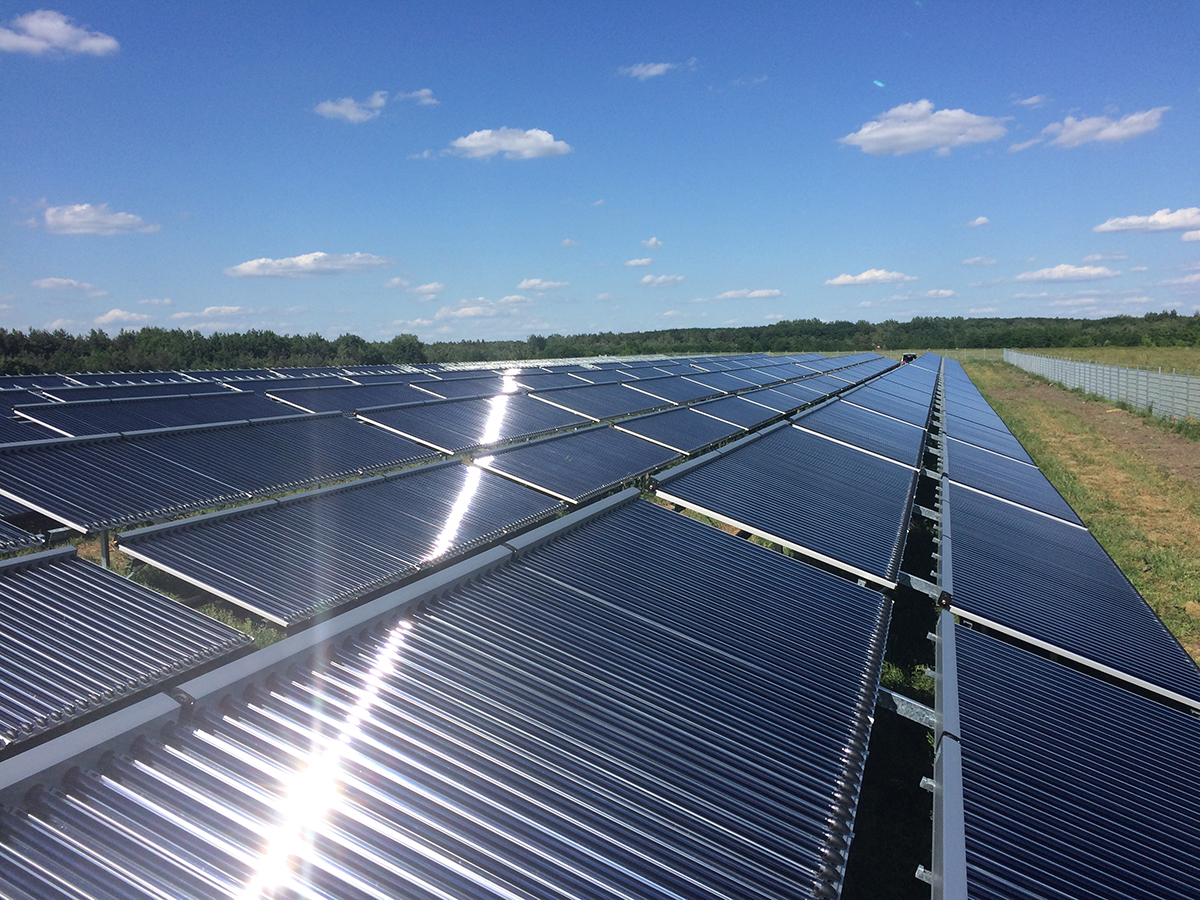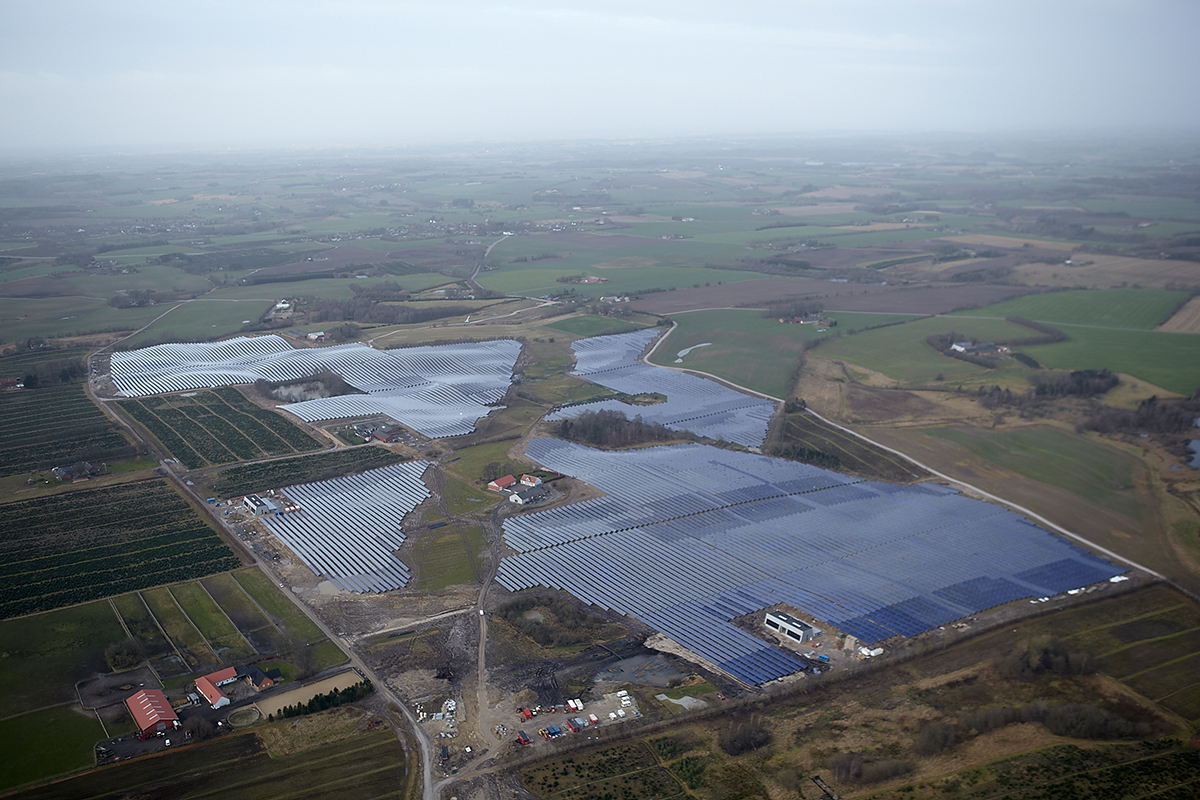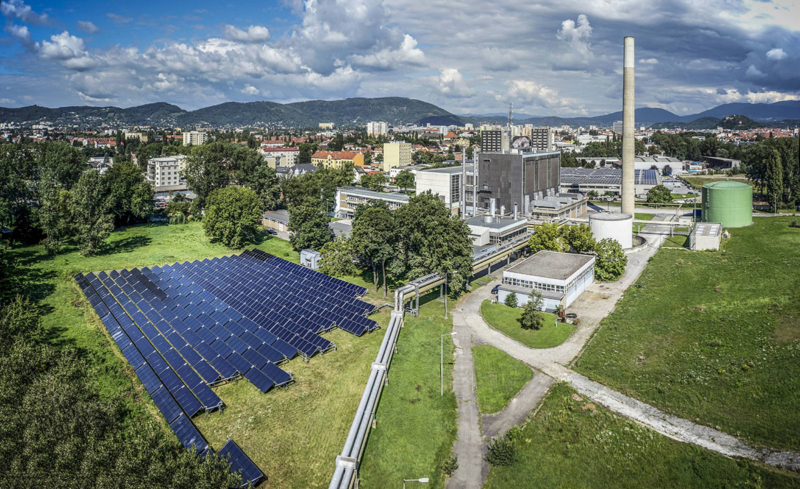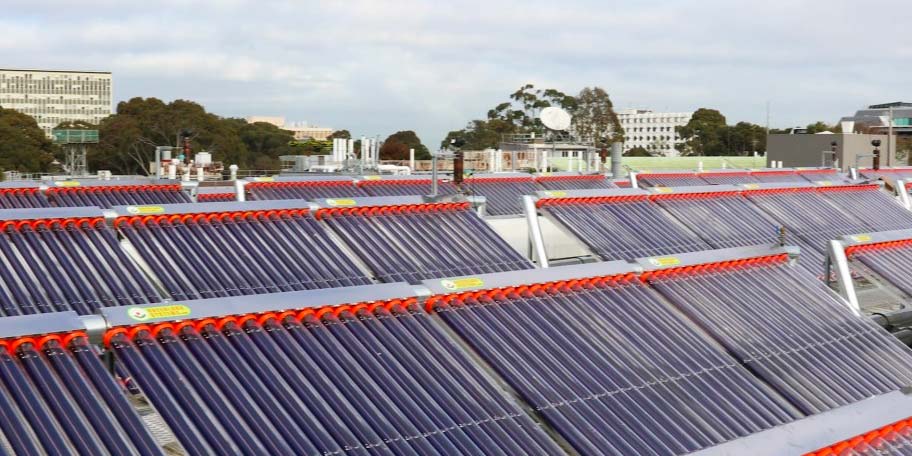Germany’s largest solar thermal plant inaugurated
25 000 inhabitants, every year.
The collector field of Senftenberg, unlike some other smaller solar projects from Ritter XL, is hydraulically separated from the district heating net. Even if the collectors are operated with water without any antifreeze fluid, two heat exchangers separate them from the district heating net. Rolf Meißner, director of Ritter XL explains that the hydraulic separation is simply a precaution due to the insufficient water quality in the district heating of Senftenberg.
The area of 2,2 hectares where the plant is built is located on a previous waste disposal site from the City of Senftenberg, where the recultivation process ended last year. It was a chance for Senftenberg that a strand of the district heating net is passing directly along the site. Like this, a short transmission pipe of a few hundred meters is enough to connect the solar plant with the district heating network.
The head of the energy policy department in the Federal Ministry for Economic Affairs and Energy Thorsten Herdan underlined at the inauguration event that the solar thermal plant of Senftenberg is not a research or demonstration plant but a commercial plant that has been calculated according to economical criteria. As an emblem of the solar district heating technology, the plant will be observed with attention from Berlin, said Herdan. ‘The monitoring of this plant is extremely important to us. Show us with this plant, how it can be done’, called Herdan to the public.
Important facts about the solar thermal plant in Senftenberg
Total area: 2,2 ha
Collector field: 170m * 120m
Gross collector area: 8 300 m²
Number of evacuated tube collectors: 1 680
Total length of the pipes: 6,5 km
Calculated yearly yield: app. 4 GWh
Operator: Stadtwerke Senftenberg
Manufacture and planning of the collector plant and regulation: Ritter XL Solar GmbH
General contractor: INTEGRAL Projekt GmbH & Co. KG, Cottbus




